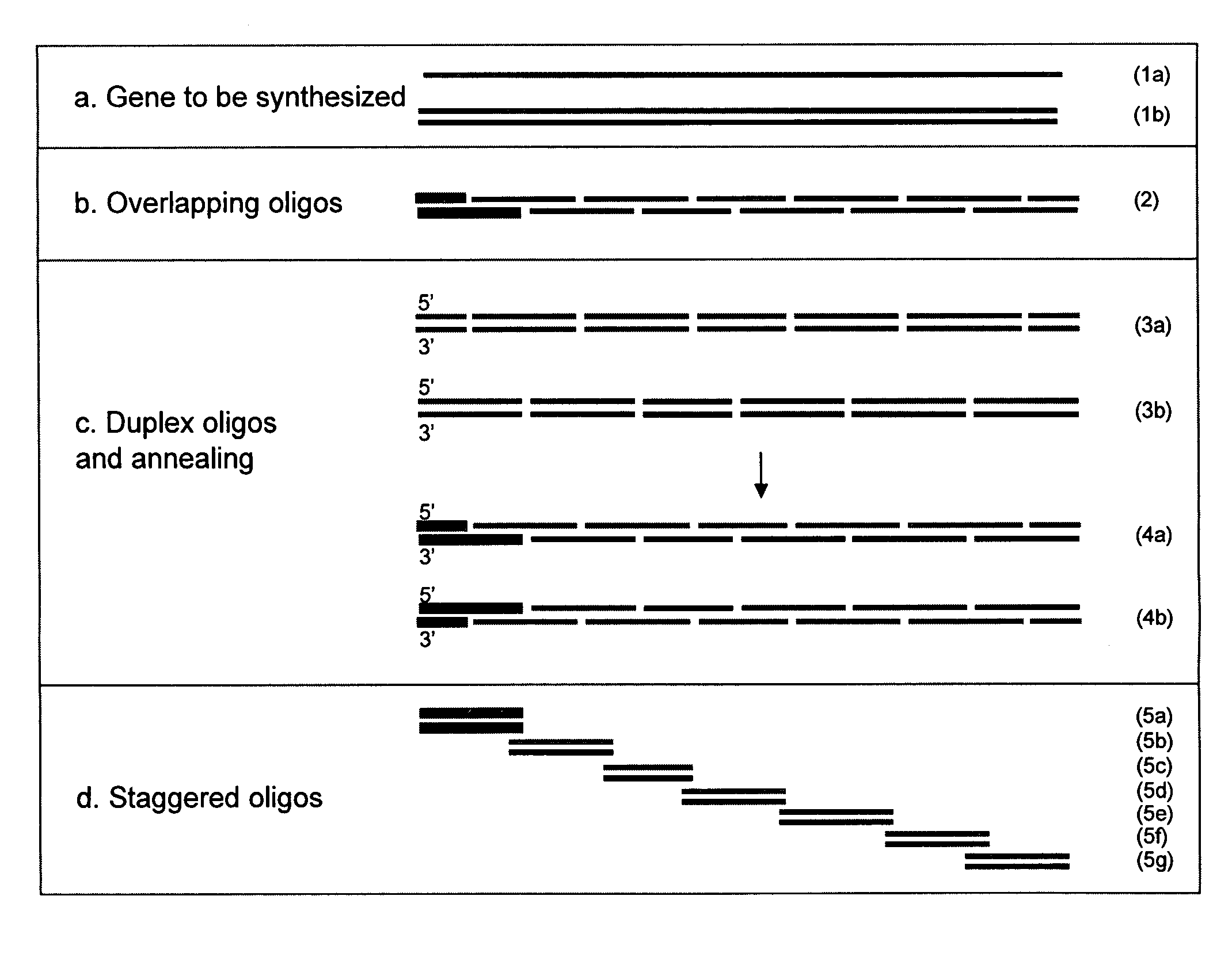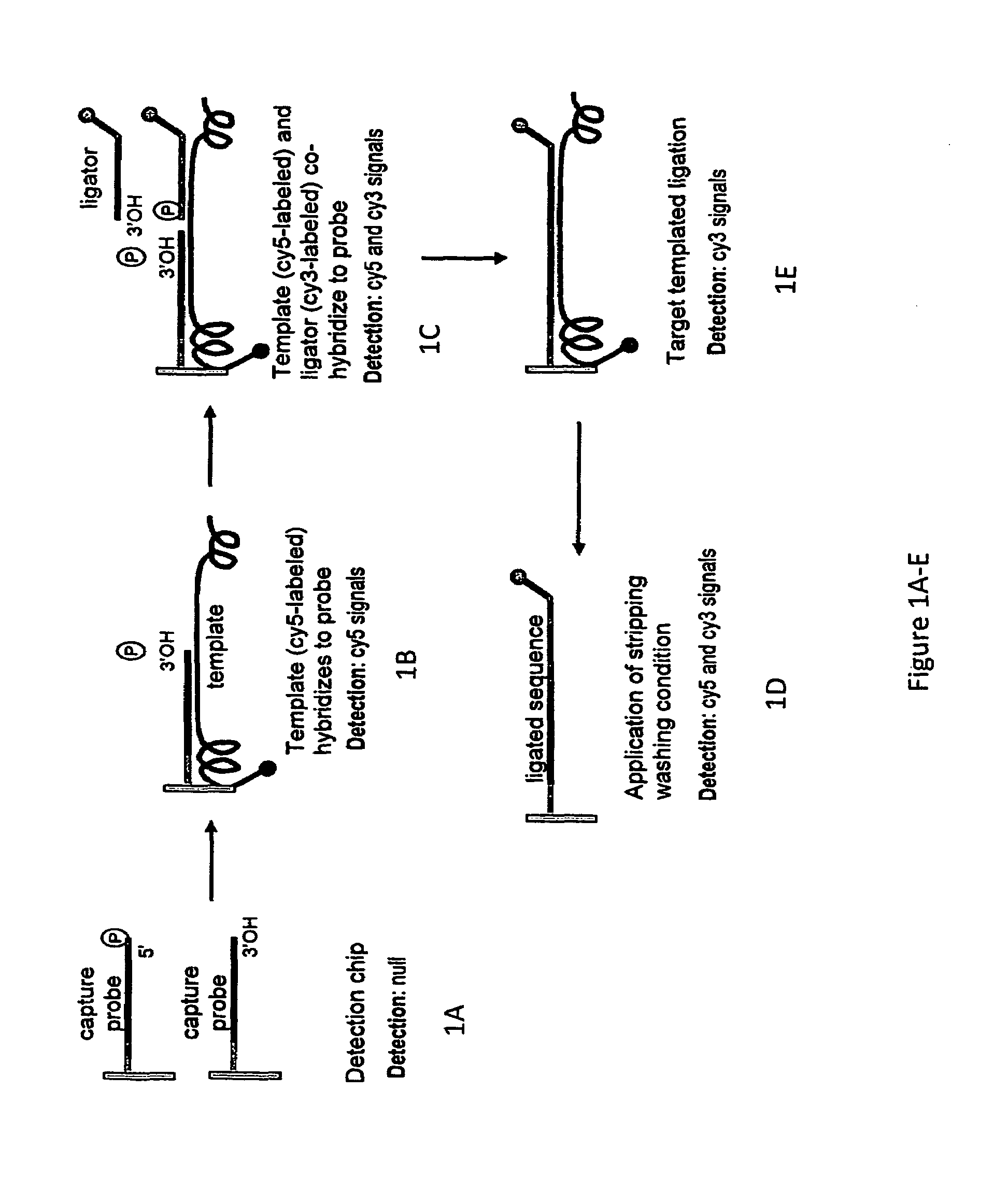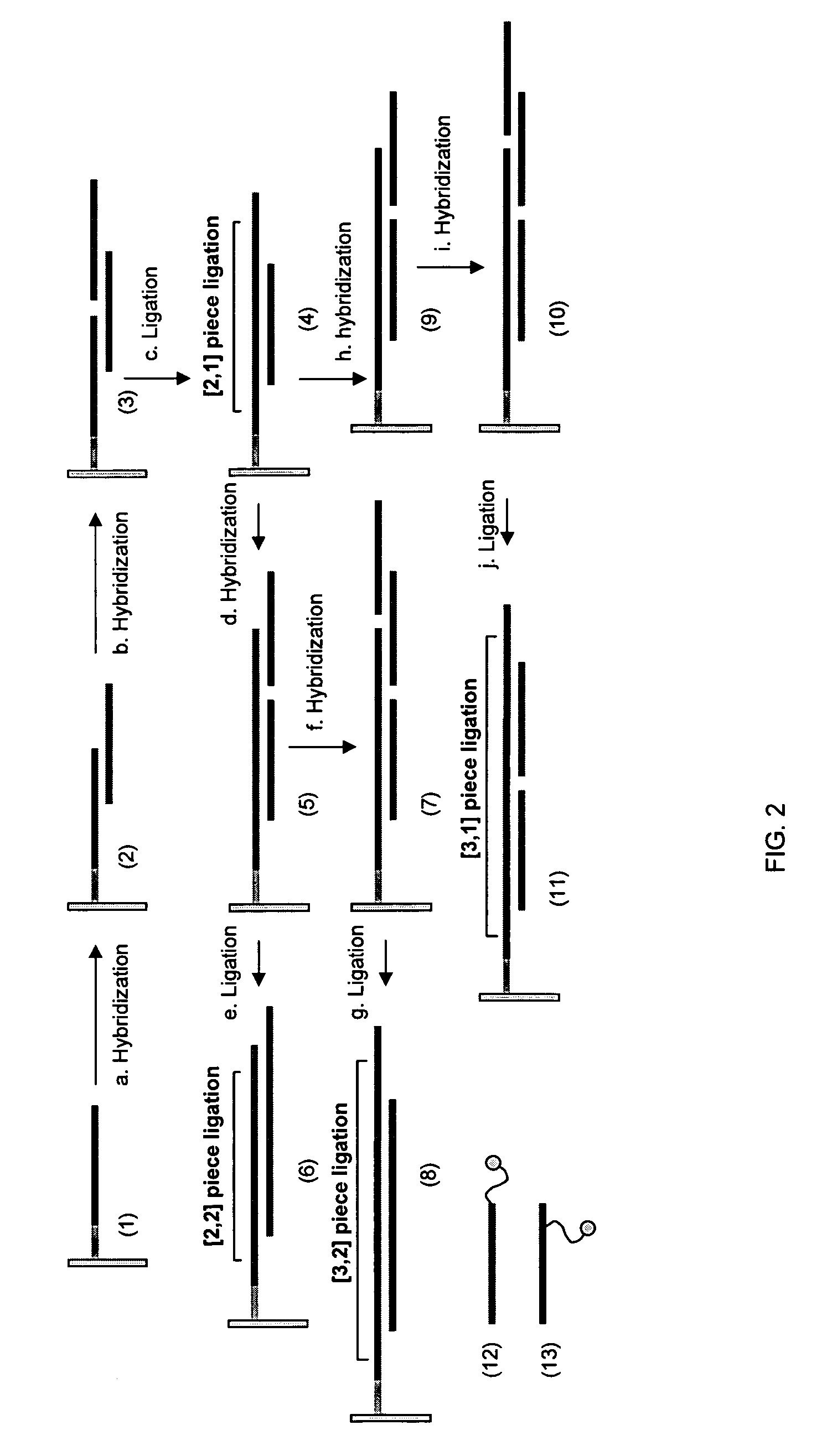Making nucleic acid sequences in parallel and use
a nucleic acid sequence and sequence technology, applied in the field of gene engineering, synthetic biology and genetic engineering, can solve the problems of affecting the efficiency of nucleic acid sequences, and requiring thousands to millions of tests for large-scale experiments, so as to improve hybridization specificity, reduce salt concentration, and improve the effect of hybridization
- Summary
- Abstract
- Description
- Claims
- Application Information
AI Technical Summary
Benefits of technology
Problems solved by technology
Method used
Image
Examples
example 1
On Surface Ligation
[0120]The images shown in FIG. 10 demonstrate the results of on surface ligation using template strands synthesized on CPG and ligators synthesized using microchip (Zhou et al. 2004). 25 The experiment used the target sequences (SEQ ID #4180-#4183) from cystic fibrosis transmembrane conductance regulator (CFTR) gene. These four 81-mer DNA sequence targets were amplified by PCR on DNA products made from chip-synthesized oligos. SEQ ID #4180 corresponds to the portion of the wild-type CFTR gene between 1069-1089. SEQ ID #4181 corresponds to a C to G mutation of this wild-type fragment at position 1650. SEQ ID #4182 corresponds to a C to G mutation of this wild-type fragment at position 1655. SEQ ID #4183 corresponds to a mismatch (MM) mutation (deletion) of this wild-type fragment at sites 1652-1654. The mutations were interrogated by synthesizing 34 capture probes in lengths of 35-mers and 25-mers, which incorporated A, C, G, or T at the 5′-position of the capture ...
example 2
Oligonucleotide Design for Long DNA Synthesis:
[0121]All sequences discussed in this example are listed in Table 1. A 1 kb long DNA (SEQ ID #90) is divided into four 268 bps fragments (SEQ ID #90-1 to #90-4) with the first fragment (SEQ ID #90-1) 3′-end overlapping with 5′-end of second fragment (SEQ ID #90-2), and 3′-end of second fragment overlapping with 5′-end of third fragment (SEQ ID #90-3) and so on. For each 268 bps fragment, it is divided into two sets of oligos. One set of these oligos contains SEQ ID #90-1-F1 to #90-1-F5 (FIG. 13), SEQ ID #90-2-F1 to #90-2-F5, #90-3-F1 to #90-3-F5 and #90-4-F1 to #90-4-F5; the other set contains SEQ ID #90-1-H1 to #90-1-H5, #90-2-H1 to #90-2-H5, #90-3-H1 to #90-3-H5 and #90-4-H1 to #90-4-H5. Two sets of oligos are from the same strand of 1 kb long DNA (SEQ ID #90). The lengths of these oligos are as such that SEQ ID #90-1-F1 is half overlapping with SEQ ID #90-1-H1, and SEQ ID #90-1-H2 is half overlapping with SEQ ID #90-1-F1 and SEQ ID #9...
example 3
EGFP Oligos as Assembly Control
[0123]The EGFP oligonucleotides #96-A10 to #96-A13 are the complementary sequences of #96-S10 to #96-S13, repectively (FIG. 14). The arrangement of these oligoes is as such that SEQ ID #96-A10 is half overlapping with SEQ ID #96-S10 and #96-S11, and SEQ ID #96-A11 is half overlapping with SEQ ID #96-S11 and SEQ ID #96-S12 and so on (FIG. 14A). The 5′-end of SEQ ID #96-S10 was labeled with fluorescent dye Cy3.
PUM
| Property | Measurement | Unit |
|---|---|---|
| diameter | aaaaa | aaaaa |
| wavelengths | aaaaa | aaaaa |
| temperature | aaaaa | aaaaa |
Abstract
Description
Claims
Application Information
 Login to View More
Login to View More - R&D
- Intellectual Property
- Life Sciences
- Materials
- Tech Scout
- Unparalleled Data Quality
- Higher Quality Content
- 60% Fewer Hallucinations
Browse by: Latest US Patents, China's latest patents, Technical Efficacy Thesaurus, Application Domain, Technology Topic, Popular Technical Reports.
© 2025 PatSnap. All rights reserved.Legal|Privacy policy|Modern Slavery Act Transparency Statement|Sitemap|About US| Contact US: help@patsnap.com



